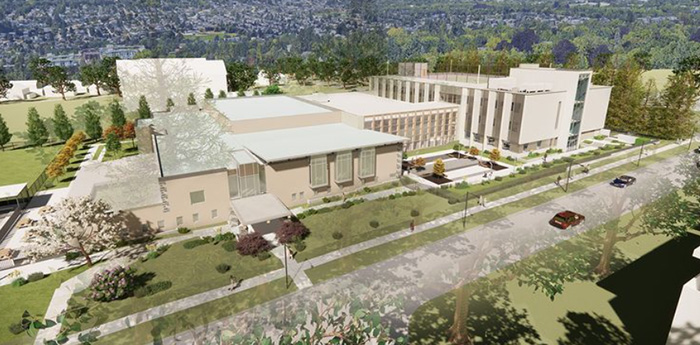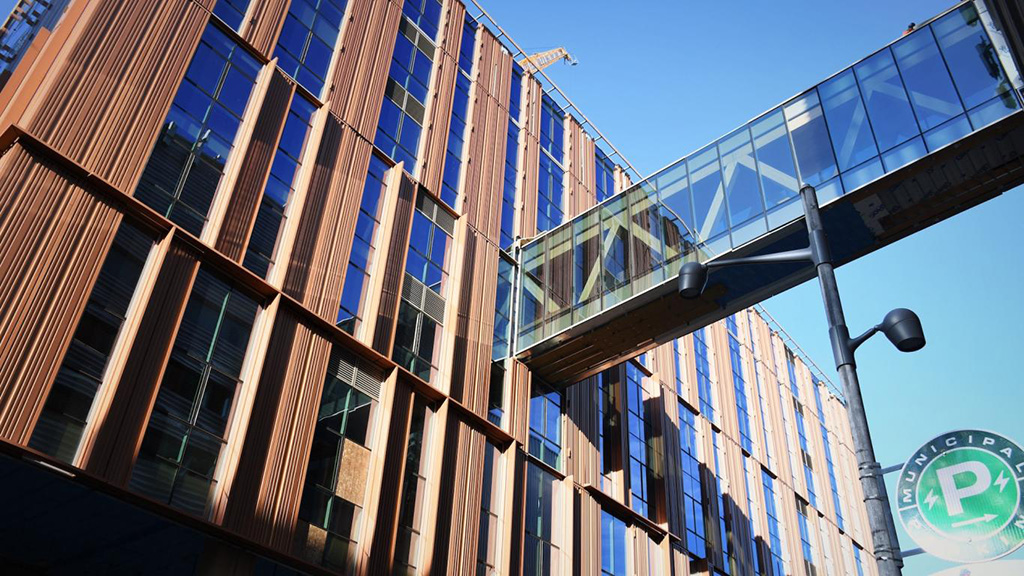Mass timber is making strides in the educational space with two new projects in Vancouver and Toronto.
associate principal Milos Begovic presented the Here to Stay: Educational Projects in Mass Timber session during the ’s annual conference held in Vancouver.
Begovic highlighted innovative wood-based construction at both the Little Flower Academy, a Catholic girl’s school in Vancouver, and the Limberlost Place project in Toronto, a 10-storey building on the campus.
Currently the National Building Code only allows up to two storeys of combustible construction for assembly and occupancy projects so it was necessary to follow alternative compliance prescribed in the code to get both projects built.
“If we can prove equivalent fire safety features can be achieved through alternative means and these projects used mitigating measures to achieve that goal,” he said.
“In the case of Limberlost Place we used enhanced sprinkler protection and smoke detection and encapsulation of some amount of the wood to increase fire safety. Little Flower Academy, which only goes one storey above the limit, required less.”
Begovic said while mass timber allows for quicker construction, logistics and co-ordination have not yet caught up.

“Mass timber is a fantastic material because it’s prefabricated to a great degree. They used roboticized processes to pre-cut it, deliver it to site and drop it into place. It’s very clean and efficient but the construction industry needs to learn how to tap into that efficiency and get all the other trades working in tandem with that kind of speed,” he said. “Most of the processes are built around slow and messy sites and the sequencing of trades has to come up to speed.”
Begovic said floor height restrictions for the Limberlost project due to overall height restrictions for the building necessitated using a flat floor system rather than drop beams and employing a hybrid timber and concrete system.
“We used flat beams, which are essentially really wide CLT members that are shear connected to a concrete topping to get a composite action between timber and concrete,” he said.
Acton Ostry previously worked on the Brock Commons residential wood tower on the University of British Columbia campus and found it was necessary to install a concrete core far in advance of wood construction, Begovic said.
In the case of Limberlost Place the intention was to accelerate building and shorten the time between structural installation and woodwork, he said.
“We were looking at ways to bring the whole structure together in tandem and that meant either moving away from concrete and using a full mass timber solution or one that’s hybrid with steel which comes up at the same rate. We ultimately landed on steel,” he said.
While Little Flower Academy was a smaller-scale project, it presented its own challenges. The 100-year-old building was originally concrete wall classrooms. Changing the space included introducing flexibility and adaptability including programmable space with greater access.
“There was no height limit so we used glulam beams which are simpler and more cost effective. We used 18 metre cross-laminated which is about as long as you can get and was used for the high school basketball court,” Begovic said.
He added the design intentionally shows off the wood elements of the project.
“We wanted to expose the beauty of wood in strategic ways that don’t compromise other parts of the design,” he said.
The encapsulation of wood wasn’t required at Little Flower Academy, and sprinkler coverage in exposed places was more cost-effective, Begovic added.
“We had an extended ceiling with tiles, but we exposed the glulam. We tried to expose all the framing and that approach was also used in the atrium,” he said.
“It’s a dramatic, three-storey structure that’s rich with wood,” Begovic said.











Recent Comments
comments for this post are closed